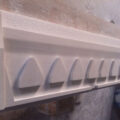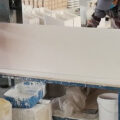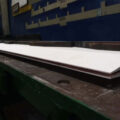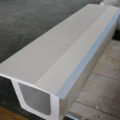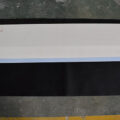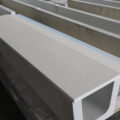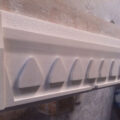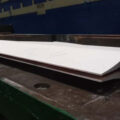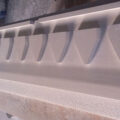Molten metal is typically introduced into the caster from a trough to a furnace. Typically, a nozzle introduces the molten metal into the mold of the caster. In a twin belt caster, the mold is formed by a pair of opposed movable belts and a pair of opposed side dams. A metal product, such as a slab, is formed in the mold by solidifying the molten metal.
A recurring problem with casters utilizing a nozzle is that molten metal can freeze at the nozzle tip. This freezing of molten metal at the nozzle tip causes undesirable surface qualities in the cast slab. In addition, freezing of molten metal at the nozzle tip can cause nozzle damage.
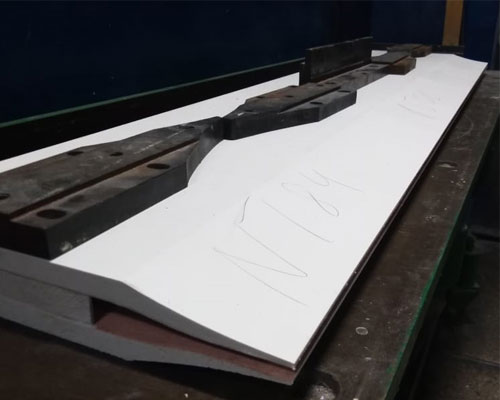
What is needed, therefore, is a caster that includes means for resisting freezing and backflowing of molten metal to the nozzle tip. By resisting this freezing and backflowing of molten metal to the nozzle tip, a higher quality cast metal product can be produced in the caster.
The caster means defining a mold to receive molten metal therein and a nozzle for delivering the molten metal into the mold. The nozzle includes a tip. The caster further includes means for delivering a gas to a space defined by the mold defining means and the nozzle. In this way, freezing and backflowing of the molten metal near the tip is resisted.
The method further comprises introducing a gas into the space defined by the nozzle and the mold defining means while the molten metal is solidifying in the mold. Once again, the introduction of the gas into the space resists freezing and backflowing of the molten metal to the tip of the nozzle.
The caster is supplied with molten metal from a holding furnace. The molten metal is delivered from the holding furnace by a trough to the tundish of the caster. The molten metal then is directed by the tundish into a plurality of tubes and then into the nozzle. The casting tip and nozzle introduce the molten metal into the mold of the caster. The mold includes a center portion, because this mold is generally rectangular in cross-section in order to form slabs, a pair of outside edge portions. The mold is defined by a pair of opposed movable side dams and a pair of opposed movable belts. The molten metal solidifies into a metal product in the mold and is then moved out of the mold at casting speed.


